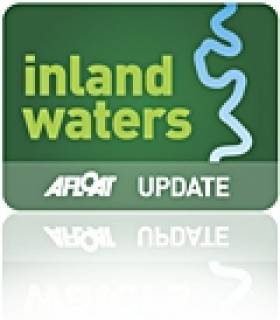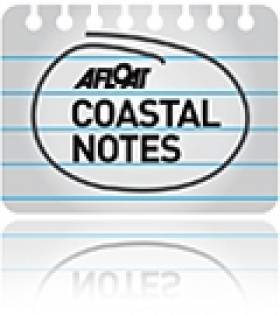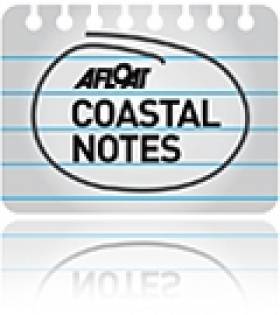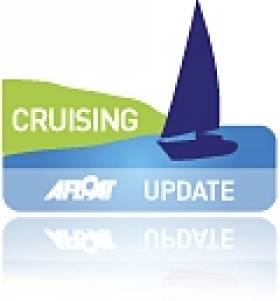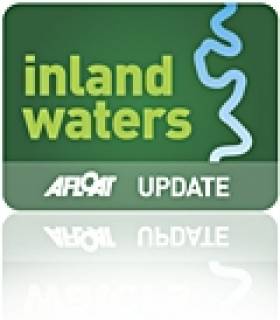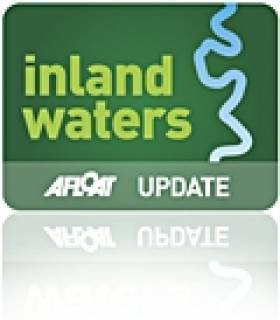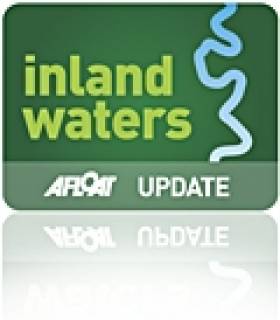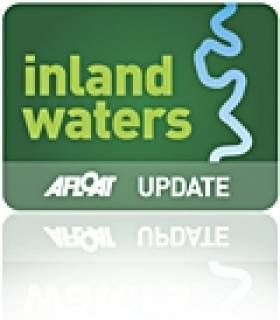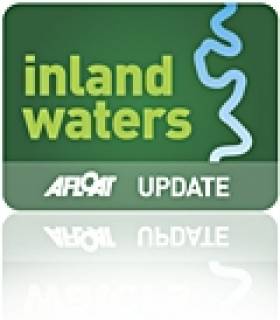Displaying items by tag: inland waterways
Marine Notice: Erne System, Lower Lough Erne, Kesh Marina Jetty
Erne System, Lower Lough Erne, Kesh Marina Jetty
Waterways Ireland wishes to advise masters of inland waterways vessels that approximately 15m of this jetty in now available for use while the remainder is closed for repair. Access from the jetty to the car park is also available.
A further marine notice will issue when repairs have been completed.
Any inconvenience that this may cause our customers is regretted.
Charles Lawn
Lt Cdr (rtd)
Inspector of Navigation
12 Jan 2011
Tel: 00 353 (0) 90 6494232
Heritage Council Face Severe Cuts
The Heritage Council of Ireland is to face a 47% cut in funding following the budget's announcement on Tuesday. The large-scale reduction in funding the statutory body will decimate the heritage sector and threatens the closure of many small enterprises that are dependent on it. The cut is on top of a 30% fall in funds introduced during this year.
The council is charged with identifying, protecting, preserving and enhancing Ireland's national heritage which also includes seascapes, wrecks and the inland waterways.
"We are extremely concerned about the disproportionate nature of the cuts to the heritage sector. While the heritage sector recognises that it must share the burden of the cuts required to tackle the country's economic crisis, the cuts announced last Tuesday are completely disproportionate in comparison to other Departmental cuts." said Michael Starrett, chief executive of the Heritage Council.
"As a result, the future of heritage initiatives nationwide which have created hundreds of jobs, empowered local communities and enhanced the value of heritage as a tourism resource, are severely threatened", he added.
According to the Heritage Council, such cuts will have a detrimental impact on the national heritage and the quality of tourism offered. In 2009, over three million overseas visitors engaged in cultural/historical and spent an estimated €1.9 billion. Funding will now no longer be available to protect and manage the nations heritage.
For information on the Heritage Council's marine publications section click here and on inland waterways logon to www.heritagecouncil.ie/inland_waterways/
Heritage Council's Online Marine Publications
The following topics below are just some of the categories featured, they include the Bere Island Conservation Plan, Ireland's Sharks & Rays, Conserving Ireland's Maritime Heritage and an Audit of Maritime Collections.
The maritime heritage section of the Heritage Council covers the cultural, physical and ecological dimensions. In addition it embraces the legacies of past generations, their traditions and natural features of both coastal and offshore environments.
For those interested in freshwater topics, the Heritage Council also recognises the importance of our inland waterways and canal network. The Heritage Council has undertaken a Waterway Corridor Studies on the Shannon, as well as on parts of the Grand and Royal Canals. For further information and downloadable in PDF format logn to www.heritagecouncil.ie/inland_waterways/
Cruising Association's MedNet Goes Global
The Cruising Association has just launched a new internet and email based net, which lets members cruising various regions of the world arrange meets, ask questions and receive answers about ever-changing local facilities and regulations.
It all started in 2000 as Mednet, a service for some 85 members cruising yachts and motorboats in the Mediterranean. MedNet 1 allowed one-to-one email communication but soon members wanted more, especially the ability to see the answers to other members' questions.
So MedNet 2 was born in Spring 2001, providing wider access to conversations. By Autumn 2003 MedNet 2 had moved to Yahoo Groups, but as membership increased mail traffic became too heavy for slow and expensive internet connections on boats. As a consequence MedNetLite was introduced for those with low bandwidth connections. By now 250 users were exchanging news about lay-up sites, marinas, restaurants, anchorages, provisioning, boatyards, itineraries and regulatory changes. But a good long-term record of all this data was missing.
So MedNet 3 was introduced in 2006, working as an email based forum within MyCA, the Cruising Association members-only intranet. There were still shortcomings. The system was passive, collecting e-mails and displaying them online. Inputs were only by email. By now, users had grown to 350, 10% of the Cruising Association's membership. Members cruising in other regions began asking for their own networks.
The time had come to upgrade so Version 4 was developed by a group of Cruising Association members with IT skills. This has just been launched for four regions; Mediterranean, Baltic, European Inland Waterways and 'Blue Water'. Members can join as many as they wish. They post and respond online, or by email. They can receive full or lite email messages or opt for no email, just tuning in online when they have Internet access. A full record of all these discussions is maintained online, making it easy to research topics and keep the Cruising Association's many members-only publications right up-to-date.
On MedNet recent discussions have included:
• The need for grey water holding tanks in Turkey
• The cheapest way of making cash withdrawals
• Marina costs in western Italy
• Recommendations for a rigger in Preveza
• How to watch British TV in the Med
• Places for winter storage ashore
It will be interesting to see the sorts of topics that the wider use of MedNet technology brings!
New EU Passenger Rights for Sea & Inland Waterways
The European Parliament and European Council have formally adopted a regulation giving new compensation rights to passengers using water transport. The regulation is expected to come into force at the end of 2012.
"People are entitled to enjoy the same levels of quality and safety wherever they travel within the European Union. I am very glad that after introducing rights for air and rail passengers, we are now also able to introduce similar rights for passengers travelling by water" said Siim Kallas, Commission Vice President and responsible for transport.
The new regulation that will enable passengers travelling by sea and by inland waterways to enjoy the same rights wherever they travel in the European Union. The information can be viewed in full from the Irish Maritime Development Office (IMDO) website: www.imdo.ie
Below is a list of the new Passenger Rights.
•guarantee of reimbursement or rerouting in situations of cancellation or of delay at departure of more than 90 minutes;
•adequate assistance (such as snacks, meals, refreshments and, where necessary, accommodation up to three nights, with a financial coverage up to €80 per night) in situations of cancellation or delay at departure of more than 90 minutes;
•compensation, between 25% and 50% of the ticket price, in situations of delay in arrival or cancellation of journeys;
•non-discriminatory treatment and specific assistance free of charge for disabled persons and persons with reduced mobility both at port terminals and on board ships, as well financial compensation for loss or damage of their mobility equipment;
•minimum rules on information for all passengers before and during their journey, as well as general information about their rights in terminals and on board ships;
•establishment by carriers and terminal operators of complaint handling mechanism available to passengers;
•establishment of independent national bodies for the enforcement of the regulation, through, where appropriate, the application of penalties.
In addition further detailed information about passenger rights in all modes of transport can be found HERE.
Section of Grand Canal to Close During Build of House Boat Berths
PROVISION OF HOUSE BOAT BERTHING AREA
The works site will extend from Griffith Bridge for approximately 350m eastwards of the bridge. Temporary dams will be constructed in the vicinity of this site. Due to low and/or possibly fluctuating water levels between the site and the 34th Lock, it is strongly advised that boats should not be moored between the site and the 34th Lock. Adequate berthage is available East of the 34th Lock. There will be no pedestrian or vehicular access through the work site. Pedestrian and vehicular entry/exit access will be via the south canal bank at L'Estrange Bridge for the duration of the works.
TRANS-SHIPMENT SHED CANOPY REMOVAL AND ASSOCIATED REMEDIAL WORKS
These works will extend for a period of approximately six weeks from November 1st 2010. Boats will not be permitted to moor in the vicinity of the work site during this period. The work site will extend from the 35th Lock for approximately 125m Eastwards, to a point approximately 15m beyond the Eastern gable of the trans-shipment shed. There will be no vessel mooring in the vicinity of the work site. There will be no pedestrian or vehicular access along the northerly canal bank from Griffith Bridge towards the 35th and 36th Locks for the site work duration.
Report Warns of Climate Change Impact on Inland Waters
Dog Poisoned as Toxic Algae Bloom Returns to Lough Ree
Westmeath County Council is warning people about the dangers of the algae for animals which forms during spells of dry weather with little or no wind.
Cllr Kevin 'Boxer' Moran told the Westmeath Independent that the dog's owner approached both himself and the council to alert them to the danger and said it was a tragic thing to happen any pet lover. The man had also been swimming, but was not affected by the algae.
Reported Floating 'Raft' Hazard on Lough Derg
A makeshift raft, of wooden construction, floating low in the water has been reported in the vicinity of the entrance to the Scarriff river on the inland waterways.
Owners are requested to keep a sharp look-out and proceed at slow speed when in this area of the navigation.
Study Aims to Turn Dublin Canals into Tourism Earners
The Launch of the Dublin City Canals Study by Lord Mayor Gerry Breen and Minister for Community, Equality & Gaeltacht Affairs, Pat Carey T.D. took place in the Inland Waterways Ireland Visitors Centre in Grand Canal Quay, Dublin on 20th July. Waterways Ireland understood the challenge for the period 2008-2013 was to identify and proactively develop and deliver the next generation of infrastructural investment as well as recreational and tourism projects on or adjacent to the Dublin City Canals.
Seeking partnership to deliver on this challenge Waterways Ireland engaged with Dublin City Council, Dublin Docklands Development Authority and Fáilte Ireland and a steering group for the ‘Dublin City Canals Study’ was formed, chaired by Waterways Ireland.Lord Mayor Gerry Breen stated “This study shows how much Dublin City Council values the canals. We will be working hard with Waterways Ireland to develop the action plan for the canals”.The Study which took 18 months to complete, reviewed all existing documentation, carried out consultation with stakeholders and examined existing conditions in the waterway corridors. Issues and opportunities were addressed and proposals made. The proposals focused on the priorities for each discrete area, developed programmes and projects for the area and the infrastructural changes needed.
The study envisages a healthier canal corridor with spaces for people and wildlife to enjoy and which contribute to an improved quality of life for the communities of Dublin; A wealthier canal corridor with thriving and attractive business, social and residential districts; A vibrant and attractive canal corridor which attracts visitors from far and wide, with an appeal based on the canal heritage and opportunities for activity; A sustainable canal corridor where people can move freely without cars in a high quality environment; A well used, well managed and well maintained inland waterways heritage.
Minister Carey welcomed the publication of the report: “This report will be instrumental as we go about the work of developing our canal corridor in Dublin. Great work has been done but the potential for further development in this area is immense.
The benefits of improved infrastructure for the quality of life for the citizens of Dublin are obvious as are the benefits in respect of the economy, tourism and the environment. The vision outlined in the report will assist us in harnessing that vast potential and I would like to congratulate all involved in its preparation.” Chief Executive of Waterways Ireland John Martin stated “Waterways Ireland is delighted that the study has reached this stage today, and welcomes the further development of this strong partnership as we begin the implementation phase.”
Essential for the relevance of the study, an agreed implementation plan and management framework has been included. The implementation plan which is subject to funding will be brought forward by an Operational Liaison Group which will be chaired by Waterways Ireland. The achievement of the goals laid out the plan are within the grasp of the communities of Dublin, and the partners will work together to bring them to fruition for the benefit of all.


























